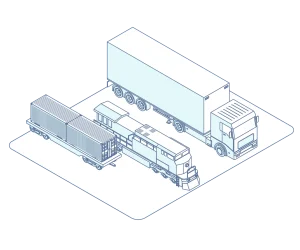It is no surprise that wholesale or retail distribution companies tend to spend most of their supply chain budget and efforts in supporting sales and customer service, and on tuning the efficiency in outbound logistics. On the inbound side, the focus has typically been more on commercial vendor agreements, product quality and design than on streamlining inbound logistics.
We state that it is time to devote much more attention towards inbound logistics processes to cut costs, increase quality of information and minimize the need for manual receiving, controls and rework. A robust and QA’d inbound process is paramount also for outbound performance.

But why is the inbound side often lagging? There are a number of challenges that need to be dealt with. Here are some of them:
Challenge 1 – Vendor integration
You probably work with a large number of vendors with varying ability or willingness to integrate or share information electronically. Some might, others not. This creates disparate, error-prone and unreliable purchase order and invoicing processes where order and pricing acknowledgements and ATP data becomes subject to vendor-specific exceptions and workarounds. It includes how to label products, packages and pallets.
It can be overcome by a more structured approach to vendor onboarding and by mandating which data that needs to be shared when, via which channel, and in which format.
Challenge 2 – Inbound transportation
Transportation agreements are often between the vendors and their preferred carriers, which create blind spots for us as buyers. Sometimes freight forwarders or other logistics service providers are used as middlemen for providing data. As a customer, you are entirely dependent on what the vendor or carrier shares in terms of tracking data.
This model prevents real-time visibility, as carrier bookings and shipments lack direct integration into your process, and it limits your ability to analyse freight costs or validate shipment data early in the process.
The recipe here (as Gartner has stated in several research notes) is to take control over inbound freight using exworks or similar agreements to push vendors to using your preferred carriers. It ensures that shipment and freight cost data are connected to your carrier agreements.
Challenge 3 – Lack of visibility and notifications
As your purchase order turns into a customer order with the vendor, a disconnect is common. Depending on the transportation arrangement, shipments are established without clear references to purchase order details, with lack of visibility and reliability in order confirmations and ETA. It also prevents usage of structured advance shipping notices (ASNs).
Ability to gather shipments, orders and progress updates in one place becomes critical for making the inbound supply chain possible to measure and monitor.
Challenge 4 – Information quality
The first three challenges add up to a general one: to ensure the overall data quality about products, orders, shipments, packages and progress. Lacking data (and labeling) leads to too much manual work involved in receiving the goods, checking for references, and adding missing information. Deviations and claims tend to become too common. It adds up to unnecessary internal lead-times from goods arrival to available for sale, and complexity in invoice validation and settlement.
There is no shortcut but to focus on driving out exceptions to get processes and data right, take control of the information exchange with vendors and carriers, and use the information to create more data-driven and automated processes.
Recognize any of the above? We’ll elaborate more on how to build a more robust inbound flow of goods with a solid chain of information exchange in a coming blog post.
Until then, feel free to contact us if you want to hear more about what we can do to support you in creating more efficient and transparent inbound processes.